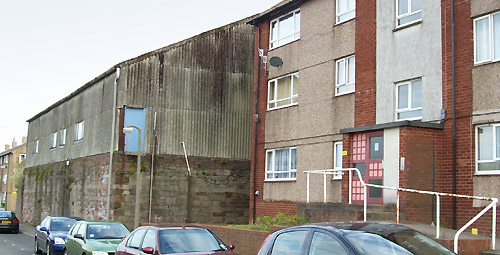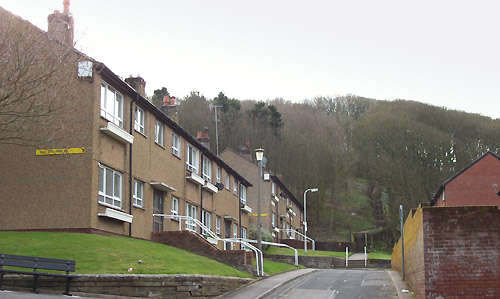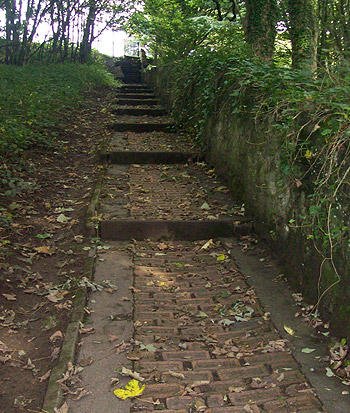
Peter Street runs parallel to George Street but further up the hill and crosses Queen Street and Scotch Street. The origin of the name seems to have been lost in time.

It starts at the seaward end at a small park on the brow of a hill that was once where a windmill stood (see Windmill Brow). This park that leads to the corner of High Street and Wellington Row is sometimes known as the swingfield because it contains a children's playgound which has just been rebuilt to include a climbing frame.

The first block of flats is built on the site of a House of Correction that existed there at the beginning of the nineteenth century. A House of Correction was basically a prison which hoped to bring about reformation of its inmates by hard labour and moral and religious education. Despite consistent bad reports from prison inspectors these ideals weren't realised at Whitehaven. Unlike at Carlisle where inmates were on a treadmill pumping water there was no regime of hard labour and anyone with a portable profession such as tailor or shoemaker could continue their trade and keep the profits of their work. There was also no system in place to educate them.
The inmates were split into four categories. Initially this was male and female then after 1821 felons and misdemeanants were also separated. The trivial offences might just be idle or unruly apprentices or servants. Only the more serious felons, and prisoners that were otherwise unmanageable or violent were kept in irons. There was a separate work room for each of the 4 categories of prisoner during the day and also a separate yard for each where they could get fresh air. There were 6 sleeping rooms and two cells but a separate place for those that were sick. Despite being almost a holiday camp for its day, with nice views across the Irish Sea, in 1826 when the report was made the crime rate was falling. That year there had never been more than a dozen prisoners at once and only 60 in the year of which only three were re-committed. By the time of Rawlinson's report in 1849, on the state of Whitehaven, he was aggrieved to find the House of Correction still standing and in use, despite having been condemned by the Inspectors of Prisons some time previously.

The back of the Seat Garage on High Street rather disrupts the street with an ugly shed of a building.

The flats on the corner of Scotch Street and Peter Street are built on the site of the workhouse (described on Scotch Street). It is interesting that literally as well as metaphorically it was a short distance between this and the House of Correction at the other end of the street.
At the far end of Peter Street is a small pathway leading to the top of Michael Street. There is also a stepped pathway leading into the White Park also know as Top Park.

The pathway is interesting because it is made from local bricks from the Micklam brick manufactory as can be seen by the word WHITEHAVEN imprinted on each brick.
© WAWL 2010